12 Onboarding Best Practices That Will Wow New Hires
There is plenty of research that shows that first impressions count when it comes to joining a new organization. This article will give you 12 onboarding best practices to get started.
The Critical Role of Onboarding in Employee Integration
Do you know? 60% of new team members make a decision about whether to stay with their new employer within the first month. So yes, first impressions matter. Unfortunately many employers are not creating a great first impression when they onboard their new team members. Their focus is typically on new-hire productivity, or compliance, or efficiency. While these are all important, we believe the most important goal when onboarding is engaging your new team member! We call it experience-driven onboarding.
When considering these tips and ideas for onboarding best practices, keep in mind the idea of “wowing them.” It’s a great framework to work in, because if you start thinking about how to wow your new employee, it becomes contagious. You can see and feel the payback almost immediately in culture, morale, and discretionary effort. It’s just so much more enjoyable working in an environment where people are engaged.
Here’s the great part about these suggestions: the ROI is through the roof! And that has to do with both the returns in terms of engagement and productivity, and the fact that many of these tips have negligible costs.
So let’s get started!
12 Onboarding Best Practices That Will Wow New Hires
#1: Their Favorite 3pm Munchie
During the onboarding process, we recommend getting to know your new employee by having them do a short survey during their pre-boarding period (see #10 – Understand your new hire). One of the questions we recommend to our customers is the following:
What’s your favourite 3pm munchie?
It’s an innocuous little question, but if you take the answer to this question and get the hiring manager to go and purchase the new employee’s favorite munchie just prior to their start date and then place it on the new hires desk for day 1, you will wow them in a really important way.
Without saying a word, you are sending a strong message to them:
- I listened to what you had to say and took the time to read about your interests
- I want to make you feel welcome with a little welcome present
Try it for yourself and watch the face of your new employee light up when you show them their desk on day 1.

#2: Decorate Their Desk
At Enboarder we have a tradition of decorating the desks of our new hires. Here’s how it works:
The last employee hired is responsible for paying it forward. They get $20 to decorate the desk of our newest hire.
What started as a couple of hand-drawn signs and a balloon or two has now turned into a full-blown themed event as each new employee tries to out-do the decorations of their own desk as they pay it forward.
This is a great example of healthy competition when it comes to wowing the new hire and making them feel welcome … and what a wonderful form of competition!
#3: Breakfast with the Team
Shake up the traditional day one lunch!
Your new team members will be naturally curious about who they’ll be working with. But why wait until day 1? With preboarding, you can virtually introduce them to the team beforehand. And now you have the opportunity to organize a team event to break the ice for the new hire even before they start their first day.
It will remove a lot of the anxiety and first day nerves because they will already have a sense for who they will be working with.
It’s also great for your existing team, because it is a nice excuse to get them together outside of the office.

#4: Hearing from the Boss
When a new hire is recruited for a role, it’s a pretty intense period. It’s also very engaging. The new hire is selling themselves to your company. Your company is wooing the new employee. Then come the offer negotiations before striking a deal and signing an offer. It’s all pretty exciting, but many employers make the mistake of then lapsing into silence. The emotional momentum that your recruitment team built up just tapers away, and honestly, the new employee can feel pretty neglected during the gap between signing and day one.
The four-week pre-start period is actually a great opportunity to preboard and start engaging with the new hire. It’s the prime time for the manager to send a congratulatory text, give them a call, and check in with them closer to the start date to see where they are at, and to help answer any questions about their first day.
Enboarder makes remote onboarding incredibly easy with our communications module which automatically reminds managers of events like this and makes it a snap for them to communicate with their new employees.
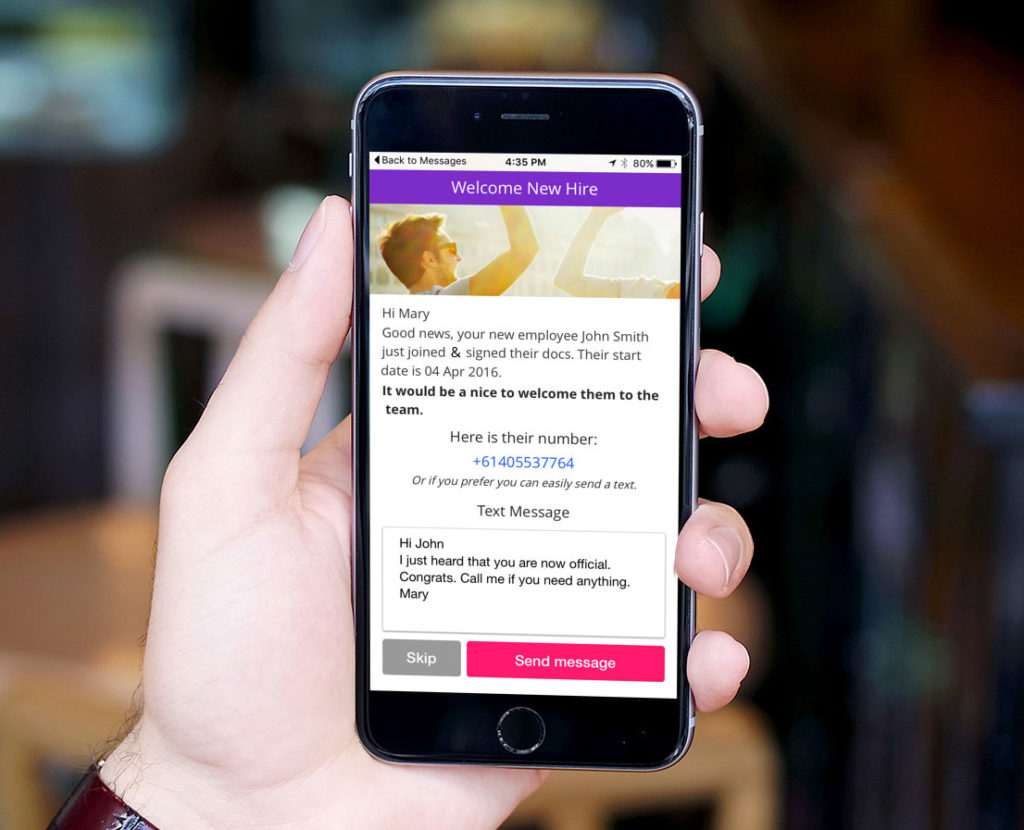
#5: Send a Gift
Here’s an onboarding tip that will create an amazing impression, not just on your new employee but also their partner. Sending them a small gift will certainly delight them. Choose something that both they and their partner will appreciate – a bottle of celebratory champagne, or a small gift hamper will send a loud message that you value not just your new employee, but also their partner.

#6: Help Them with a Quick Start
This may not be suitable for all companies and all roles, but this is a great “win-win” tactic. When a new employee has signed their offer letter, they are highly engaged. If they are a “go getter” and want to hit the ground running, then they will really appreciate anything that you can share with them to get them up to speed as fast as possible. Sending some information about your products and services, or examples of previous customer proposals will let them get up to speed in a relaxed manner rather than subjecting them to information overload during their first week.
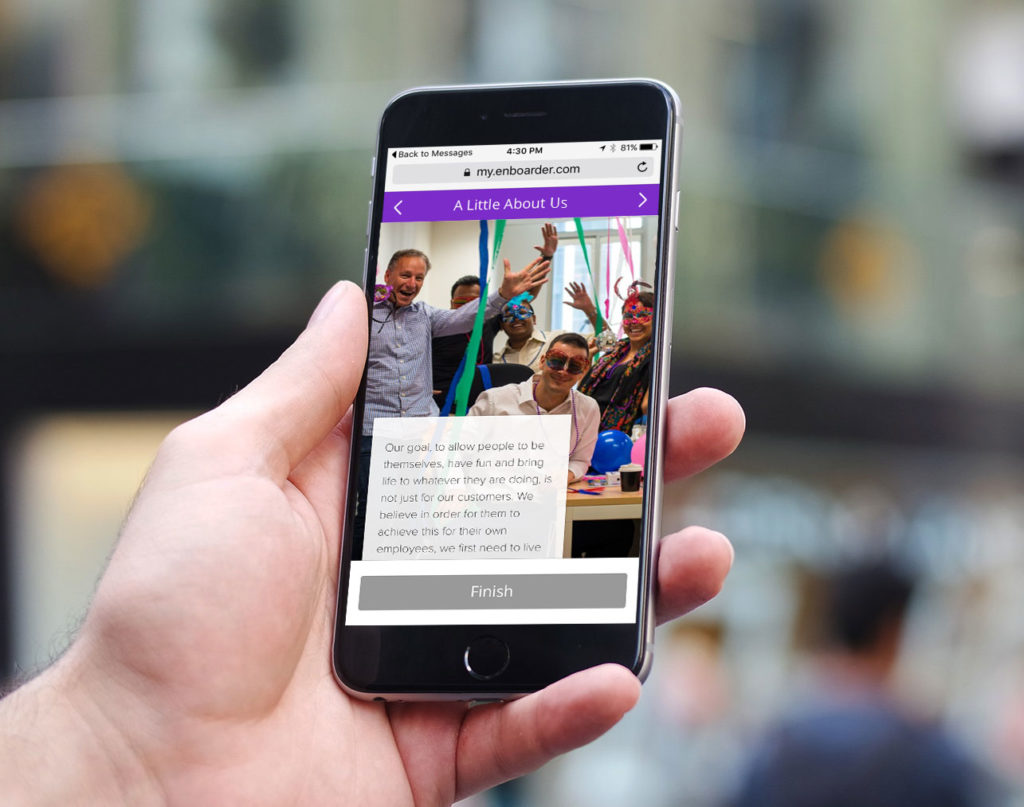
#7: Paperwork Doesn’t Have to Suck
Anytime you join a new company, you can’t escape the new hire paperwork. Policies and procedures, new starter forms, tax forms etc. These are unavoidable compliance requirements, but here are a few onboarding tips to make the paperwork process less disengaging:
- Keep it personal – if you don’t want your new employees to act like numbers, don’t treat them like numbers. The paperwork is part of the onboarding experience, and should be handled with a personal approach, rather than handled by some administrator. Ensure you are only sending the necessary documents, and that they are addressed and customized to the new employee’s name and role.
- Go electronic – this is a good way to make the paperwork process more efficient for both you and your new employees. They automatically populate duplicated information across forms and allow digital signatures to make the process efficient and quick, and the best thing is, you can fold the paperwork process into the digital preboarding period so everything is prepped and ready by the time they turn up for day one.
- A small gift – there is always something exciting about receiving a parcel or physical package. However this can quickly turn to disappointment when you open it and it is filled with just polices, procedures, and forms. Perhaps you can delight your new employee with a small gift (like a pen or notepad with company branding). If you are shipping physical paperwork to a new employee, be conscious that this is all part of your employer brand. New employees are forming opinions of their new employer with every touch point.
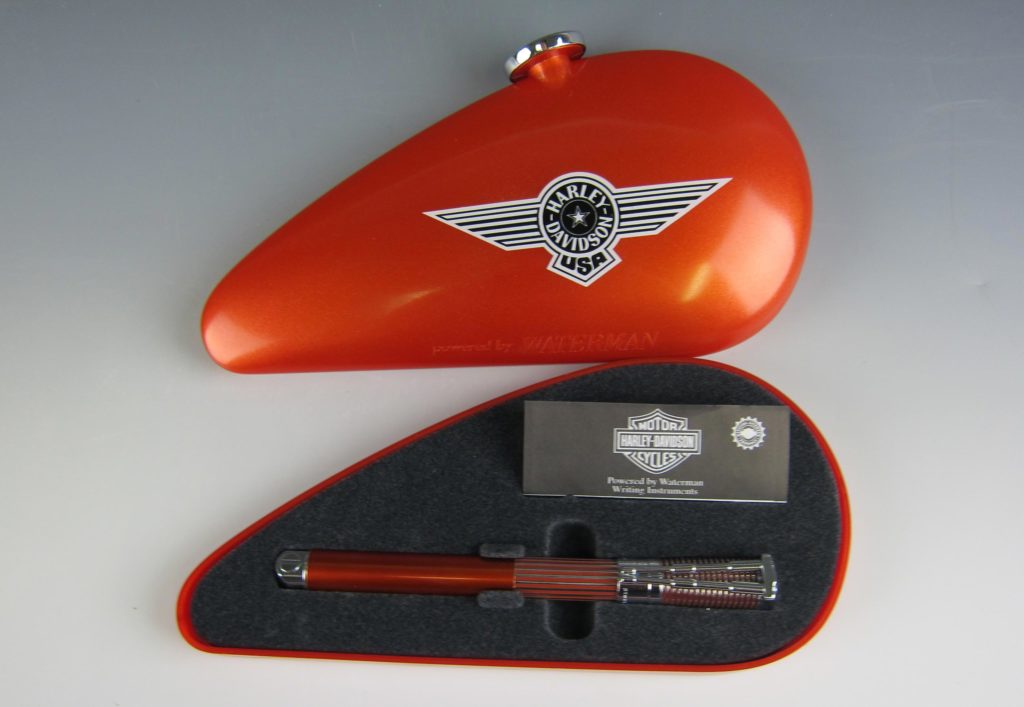
#8: Day 1 Boss Time
Nothing will show a new hire that their manager cares about them than ensuring you put aside some time for one-on-one catch-ups. If your organization does not have a policy of a team lunch during employee onboarding, consider making time for managers to take the new hire to lunch on their first day.
Enboarder can prompt managers to hold time in their calendar when a new employee’s start date is known.
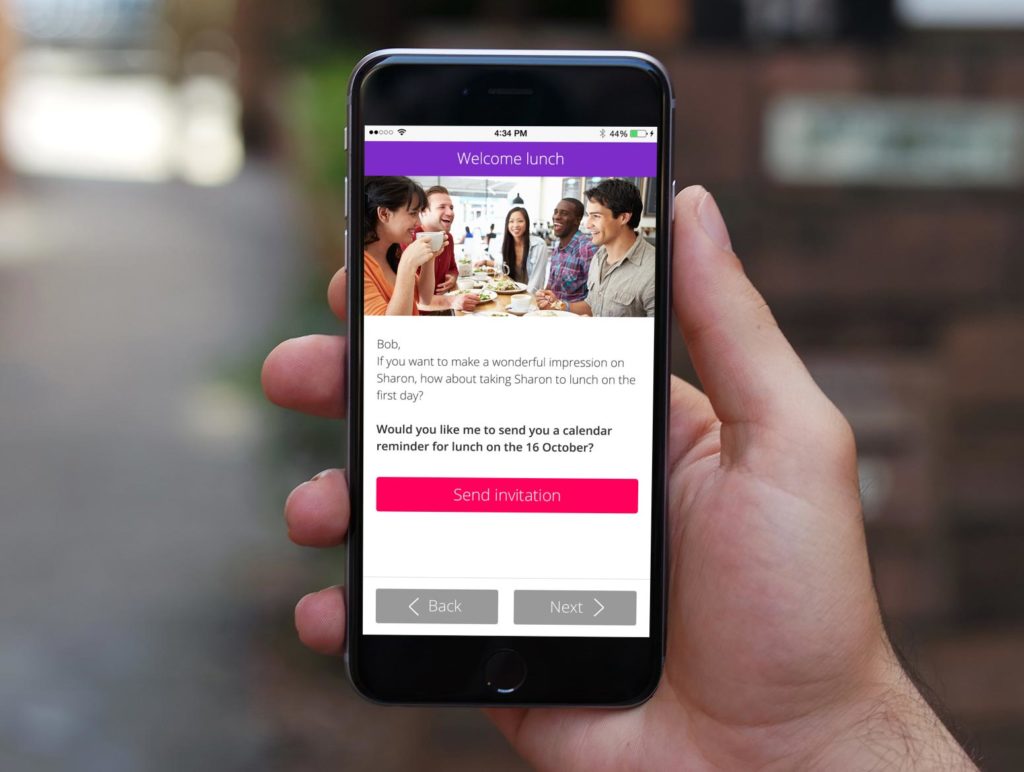
#9: Turn Onboarding into a Team Sport
Credit for this one goes to the folks at Lever. I read about something they do to onboard all of their new hires. Whenever somebody signs an offer letter to join the company, the entire company celebrates the new employee joining by getting together and creating a “work of art” that lets the new employee know that they are seriously excited about having them join the team.
They do this by getting everybody together and choreographing a little animated gif work of art. The beauty of this little exercise is that it really involves the entire team or company in the welcoming process.
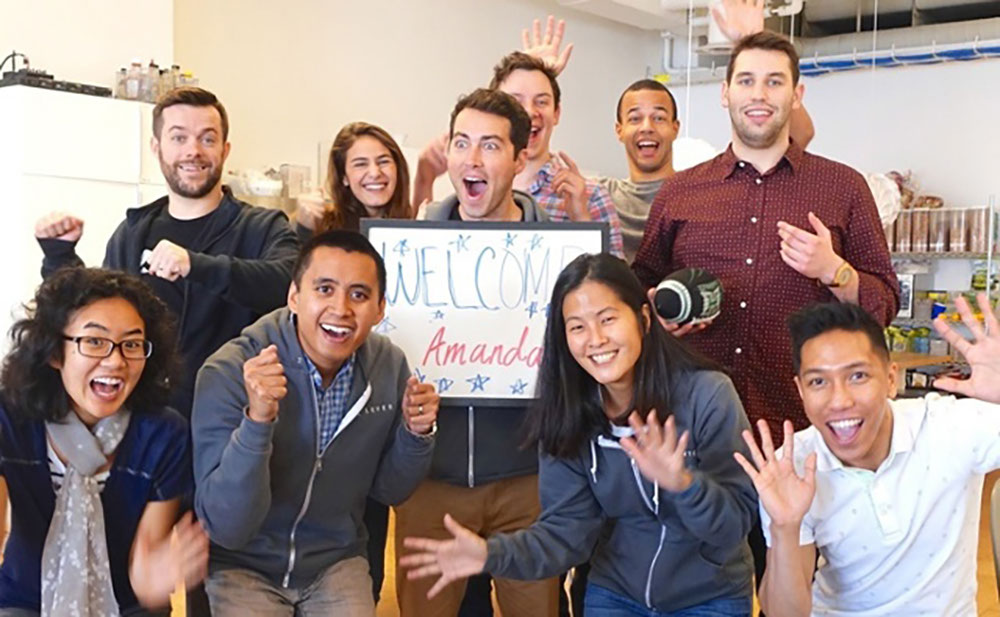
#10: Understand Your New Hire
The most important of the tactics to wow your new hire, and perhaps what sits at the heart of the way we work, is to understand who they are as an individual. Find out who they really are and what they are passionate about when they are not at work.
It’s part of human nature. Everybody wants to connect with others. When we talk about work-life balance, it’s no longer about putting up a partition between who we are at work and who we are when they are outside the workplace. Rather, it’s the freedom to bring our real selves to work, and have peers and managers know, and appreciate the “real us.”
One way of achieving this is to explain it to the new employee before they turn up to day one. Give them the opportunity of sharing information about who they really are and the passions and talents that they can bring with them to their new workplace.
To make them feel comfortable doing this, it really helps if their manager or the executives of the company communicate to the new employee why they are asking them to share information about themselves. A sincere video, or examples of senior managers within the company sharing aspects of their passions and interests outside the work environment will help the new employee feel comfortable opening up to their new team.
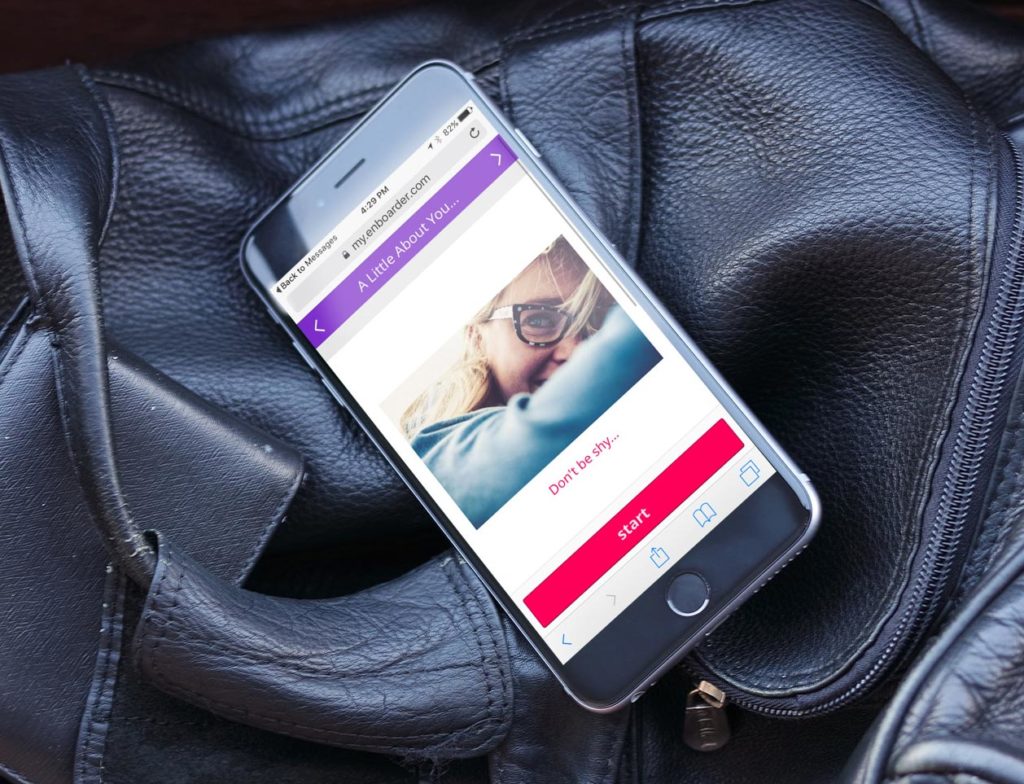
#11: Measure the Onboarding Experience
No one starts off with the perfect onboarding experience, and you can’t expect to get everything right the first time.
But measurement gives you the information you need to improve and drive behaviors. One metric which is pretty powerful is eNPS (Employee Net Promoter Score). Simply ask a single question of your new employees at regular intervals:
“How likely are you to refer [Company] as an employer to friends and associates?”

As with classic Net Promote Scores, a score of 6 or lower indicates a detractor, a 7 or 8 is neutral, and a 9 or 10 is a proponent.
By asking new employees this question at regular intervals, you achieve two outcomes. You can actually quantify the engagement of new employees in your organisation and break this down department-by-department or manager-by-manager. This can create some wonderful competitiveness between managers and departments as they try to “out-wow” each other.
If you ask this question regularly of new employees, for example day 1, week 1, month 1, month 2, month 3 etc. You can start watching for dips in the eNPS scores of new employees. It might be that after a few months the honeymoon period wears off and reality hits in terms of hitting goals and targets. If you know when this occurs, then you can remind managers that their employees are approaching this “danger period” and may need some extra coaching or support to get them over the hump. This can have a significant impact on first year retention.
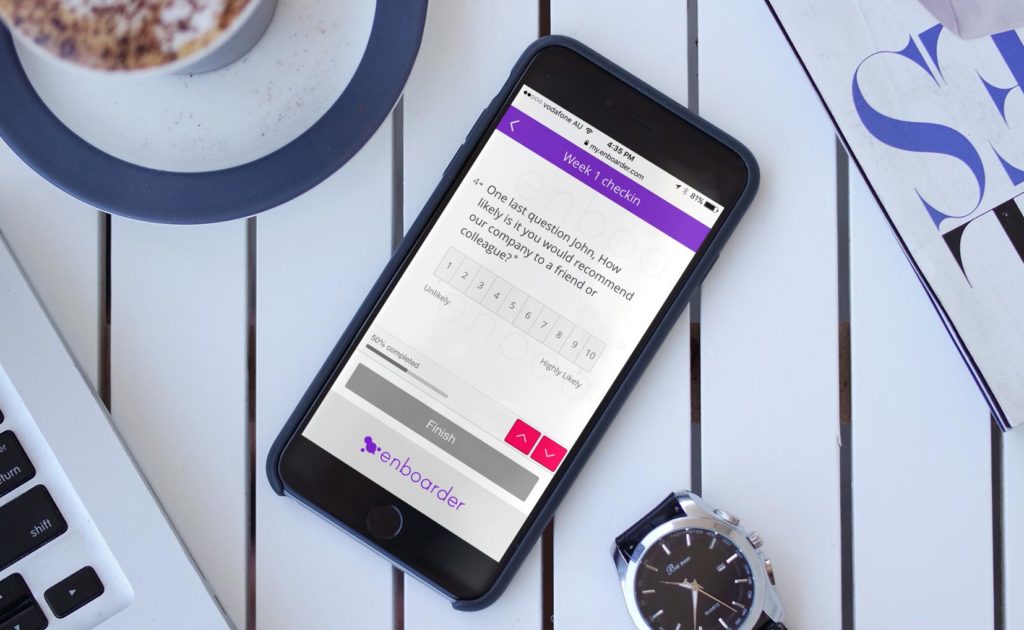
#12 Pair Them Up With a Buddy
Help your new hire easily adjust to your company culture with a built-in friend. Wondering where to start? Look for current employees who embody your company values and make sure they’re willing and able to commit to being a buddy. One of the great benefits of pairing newbies up with buddies is connecting people across the organization, creating stronger bonds across department. Don’t leave interactions between buddies to chance. Create guidelines and nudges for how often them should meet and what topics to discuss.
Committing to Continuous Improvement in Onboarding
We hope you have enjoyed some of our tactics for “wowing” your new team members and adopting onboarding best practices. The most important take away from this is that hopefully we have made you rethink the way onboarding is done in your organisation. Yes, we want onboarding to be productive and efficient, and we want to get our new hires productive as fast as possible. But the big prize is when you focus on engaging them during the onboarding process. Because higher employee engagement will pay long term rewards.
If you want to dive in further, check out how our customer Motorpoint is revving up new joiner connection and belonging with onboarding software from Enboarder. Read the full story here.